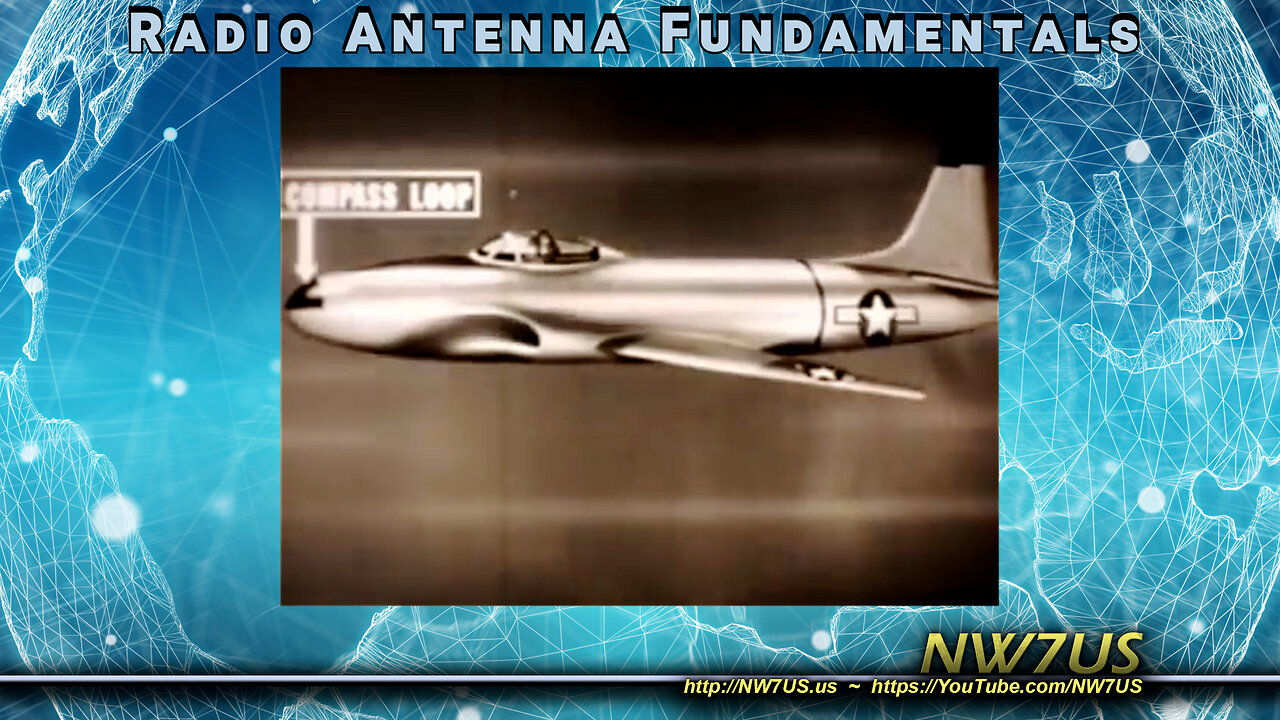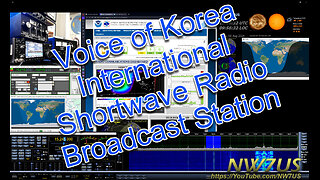Premium Only Content

Radio Antenna Fundamentals (Part 1 and 2) - 1947
Official Air Force Film, T.F.I. 4801 and 4802, Department of the Air Force
Produced by Wilding Picture Productions, Inc.
This is a United States Air Force black and white training film that came in two parts in 1947. This film deals with radio transmission systems converting electrical energy into radio waves.
In 1947, the fundamentals of radio antennas were well-established, building upon the knowledge developed in the early days of radio communication. Here are some key points regarding the fundamentals of radio antennas in 1947:
- Types of Antennas: In 1947, common types of radio antennas included dipole antennas, loop antennas, Yagi antennas, and horn antennas. Each type had specific applications based on their radiation patterns and gain characteristics.
- Antenna Design: Antenna design in 1947 focused on optimizing the size, shape, and orientation of the antenna elements to achieve the desired radiation pattern and gain. Engineers relied on mathematical models and empirical testing to refine antenna designs.
- Radiation Patterns: Engineers studied the radiation patterns of antennas to understand how radio waves were emitted and received. Radiation patterns were characterized by parameters such as beamwidth, directivity, and gain.
- Transmission and Reception: Radio antennas in 1947 were used for both transmitting and receiving radio signals. The efficiency of an antenna in transmitting or receiving signals was a key consideration in its design.
- Frequency Considerations: Antenna design in 1947 took into account the frequency of the radio signals being transmitted or received. Different antenna lengths and configurations were used for different frequency ranges to maximize performance.
- Matching Networks: Antennas were often connected to matching networks to ensure efficient transfer of power between the antenna and the radio transmitter or receiver. Matching networks helped minimize signal loss and impedance mismatch.
- Propagation and Reception: Understanding radio wave propagation and reception was essential in antenna design. Engineers considered factors such as ground reflection, atmospheric effects, and interference in optimizing antenna performance.
- Advancements in Technology: In 1947, advancements in materials and manufacturing techniques allowed for more precise antenna construction. The development of new technologies, such as radar and television, also drove innovation in antenna design.
Overall, the fundamentals of radio antennas in 1947 were rooted in a solid understanding of electromagnetic theory and practical experimentation. Engineers and scientists continued to refine antenna designs to improve the efficiency and reliability of radio communication systems during this period.
Please subscribe to my YouTube Channel: https://YouTube.com/NW7US
Also, please click on the bell, to enable alerts so that when I post a new video, you will be notified. By subscribing and making sure that the bell (alert) notification is set to ALL, you will be kept in the loop for new videos and more.
About me:
https://nw7us.us
Direct Support:
1. Donate - https://sunspotwatch.com/support.html
2. Become a Patreon Member - https://www.patreon.com/NW7US
Highlights: I am a contributing editor with propagation and space weather columns in The Spectrum Monitor - http://www.thespectrummonitor.com/
Social media:
X: https://X.com/NW7US (@NW7US)
Tumblr: http://blog.nw7us.us
Instagram: https://instagram.com/nw7us
Facebook: https://www.Facebook.com/NW7US
Facebook: https://www.Facebook.com/spacewx.hfradio
Copyright, Tomas Hood / NW7US
-
 4:38
4:38
Amateur Ham Radio Shortwave (LF, MF, HF, VHF, UHF, SHF) Communications + Space Weather
1 year agoVoice of Korea International Shortwave Broadcast Station, August 8, 2024
440 -
 LIVE
LIVE
TheItalianCEO
20 hours ago24-hr Arc Raiders Stream
86 watching -
 1:15:41
1:15:41
Steve-O's Wild Ride! Podcast
22 hours ago $2.83 earnedBert McCracken: The Unlikely Godfather of Hardcore Music
14K -
 LIVE
LIVE
Midnight In The Mountains™
2 hours agoGaming w/ Midnight | Arc Raiders w/ SilverFox & Sgt Wilky | 11AM EST
84 watching -
 LIVE
LIVE
dieseldesigns
4 hours agoServer SLAM Appetizer Before RELEASE! // Arc Raiders
63 watching -
 19:20
19:20
Stephen Gardner
1 day ago🚨Trump's latest Marco Rubio ORDER LEAKED by New York Times!
93.7K133 -
 21:33
21:33
Liberty Hangout
2 days agoDemocrats Invite Me Over For Breakfast
18.6K52 -
 2:38:56
2:38:56
FreshandFit
17 hours agoShe Left Her Man To Find A HVM In Miami w/ 6IX9INE
385K172 -
 11:16
11:16
Blackstone Griddles
16 hours agoDouble Roasted Green Chile Smash Burger on the Blackstone Griddle
17K2 -
 14:36
14:36
Tactical Advisor
20 hours agoNew Military Thermal Target
22.3K2